This exposition opens with several Pop Art precursors' collages. This form of art illustrates Pop Art movement (although it had also been previously present on Cubism and Dadaism) since collage becomes a tool for artists to show the aim for their artistic productions to become symbolical and break up with traditional art forms. Richard Hamilton and Andy Warhol's work are a good example of this tendency. British artists were important when introducing comics into the sphere of art, although American artists (such as Roy Lichtenstein and Andy Warhol) were the ones who first turned comic strips into large format paintings.
M-Maybe by Roy Lichtenstein, 1965, 152,4 cm x 152,4 cm, Ludwig Museum, Cologne, Germany
One Man Track Team, Eduardo Paolozzi,1953, collage, 10-3/4x 8-1/8 in. (27.3 x 20.8 cm). Tate Museum, London
Emblems
By the mid-20th century, the development of consumer society triggered an important growth of the mass media, which started invading each one of the aspects of our daily life. The slogans, logos, etc were source of inspiration for Pop artists, who tried to acknowledge property of some of those symbols by turning them into art (for instance Jasper Johns, Peter Blake, Robert Indiana or Andy Warhol, to name a few).
Target with Four Faces, Jasper Johns, 1958, MoMa, New York
Epiphany, Richard Hamilton, 1964, Gagosian Gallery, New York
Myths
Hollywood was going through its golden era and hence had become a star-making factory. The actors and actresses who succeeded in cinema became immediately symbols and myths with worldwide repercussion. Many Pop artists decided to focus some of their artworks in these popular figures. British Pop artists represented American Idols in their paintings but also added specific elements of their own popular culture (e.g. Blake's Beatles and Hamilton's Rolling Stones).
Swingeing London 67, Richard Hamilton, 1969, MoMA, New York
With Love to Jean Paul Belmondo, Pauline Boty,1962, oil on canvas, 48 x 59 7/8 in. Collection of Nadia Fakhoury, Paris
Portraits
The development of Pop Art had a huge repercussion in the artistic genre of portraiture. Portraits went from being merely an imitation to a genuine predecessor of reality. The traditional Pop artists didn't want to stick to realistic forms anymore; instead, they wanted to go further (which allowed them to open the door to postmodernism). Andy Warhol illustrates this idea, since in his portraits the model of the painting fades away to become a virtual image, and in the artworks he made after his attempted assassination, there is also a neat meditation on death. Allen Jones and David Hockney also worked on their own interpretation of the idea of what portraits should look like.
Darcey Bussel, David Hockney, 1994, National Portrait Gallery, London
Landscapes Interiors Still Lifes
The rise of consumer society drags along new symbols: everyday objects are seen as representative. This leads to a reinterpretation of traditional paintings (landscapes, interiors and still lifes) by Pop Artists. They adapt these classical forms of painting and make them fit in current society through, to give an example, turning still lifes into a public, commercial space in contrast with the privacy they used to represent before. Each one of the artists showed a different view on the subject, such as Lichtenstein and Ed Ruscha, which made very different versions of landscapes. Paul Caulfield and Valerio Adami focused on interiors while Sigmar Polke, Allen Jones and Claes Oldenburg among others focused on Pop Still Lifes.
Still Life With Palette, Roy Lichtenstein, 1972, Acquavella Galleries Art, New York
Hotel Chelsea Bathroom, Valerio Adami, 1968, Stedelijk Museum voor Actuele Kunst, Belgium
The shift of social behavior that took place in the middle 1920' led to an until then unknown sexual freedom that was spread in every sphere of the society. As a result, erotic metaphors began to overwhelm mass media, displaying seductive women and attractive men. This carried weigh in Pop Art. Many Pop Artists started to represent voluptuous women in their artworks, such as Roy Lichtenstein, Richard Lindner and Allen Jones while others, like Tom Wesselmann through his odalisques, offer a personal interpretation of female nudes.
Cut-a-Way, Allen Jones, 1976
3 Girls, Sigmar Polke
History Painting
Pop Art iconography was largely inspired by historical and contemporary events. This leans both on the traditional historical painting, as well as in the diffusion of images caused by the mass media, giving Pop Artists the opportunity to rethink and reinterpret history in new artistic media. Rauschenberg, Warhol, Rotella and Richter among some others focus some of their artwork in relevant historical figures such as John Fitzgerald Kennedy and his widow Jackie, Mao Zedong, Richard Nixon, etc…In Spain, meanwhile, Pop Artists (Equipo Realidad, Juan Genovés, Eduardo Arroyo to name a few) aims to make a political denounce of the historical amnesia that afflicted the country, through Pop Art.
Shining, Juan Genovés
Marylin, Mimmo Rotella, 1963
Art about Art
The use of images about images in Pop Art leads to a questioning of art's evolution since the Old Masters is called "Art about Art". Each artist deals with a different artistic movement: Hockney and Warhol deal with Renaissance Art in very different ways. Other artists use "Art about Art" with a political aim, sometimes also by means of irony, or to criticize the way society venerated some avant-garde artists, such as Duchamp (known worldwide due to his successful "Fountain"); it is the case of Equipo Crónica, Luis Gordillo and Eduardo Arroyo respectively.
El Intruso (The Intruder), Equipo Crónica, 1969

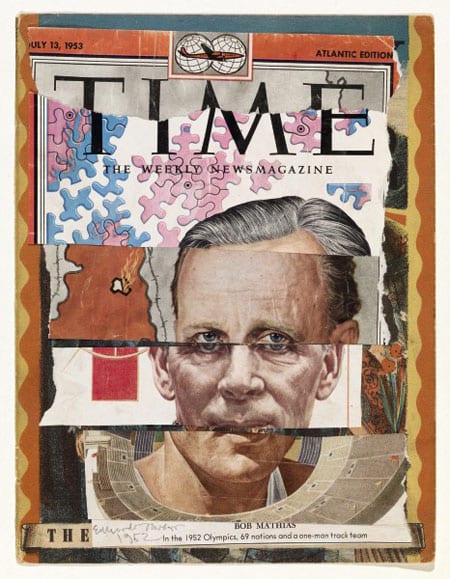


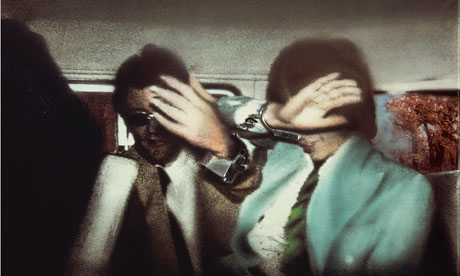



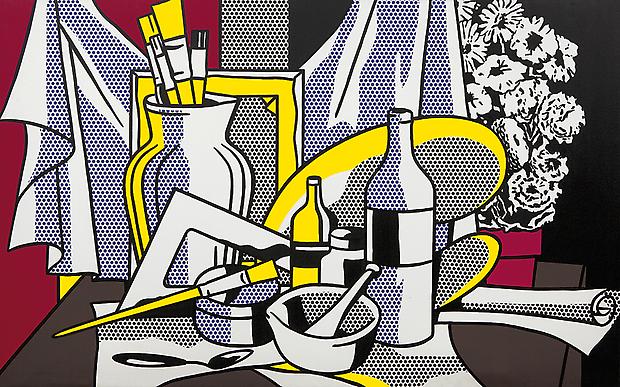
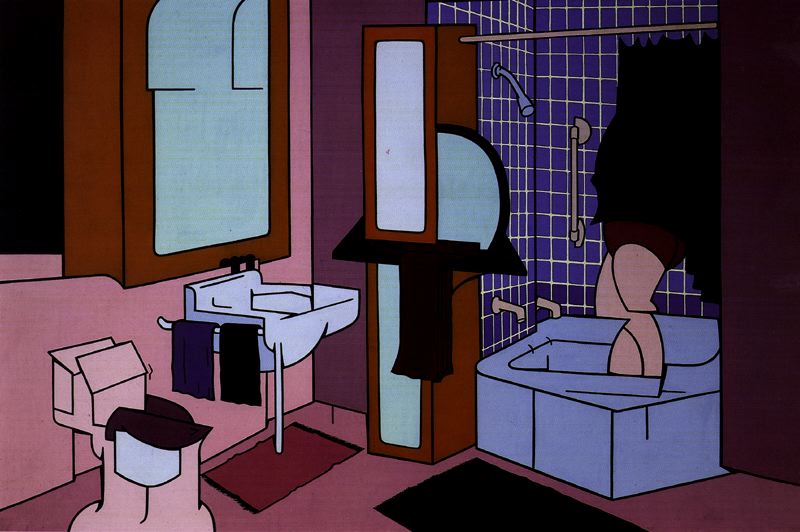


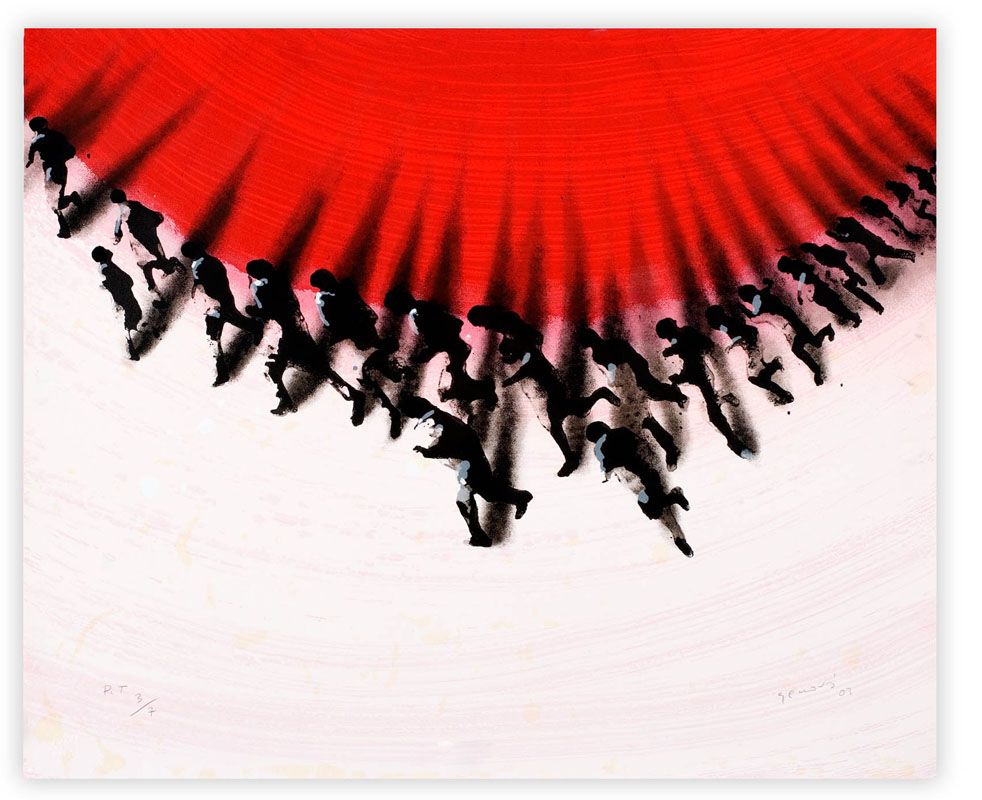
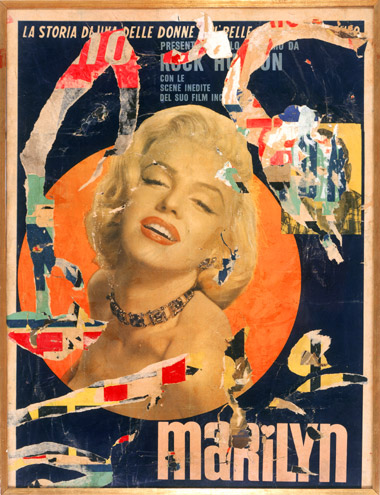

Excellent, Regina!
ResponderEliminarToo bad you forgot to add labels.
BLOG POST 6: POP ART MYTHS
--> RECAP (form & content): 14/14
--> ILLUSTRATION (incl. captions): 05/05
--> LABELS: 00/01
--> TOTAL: 19/20